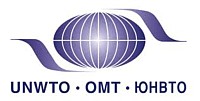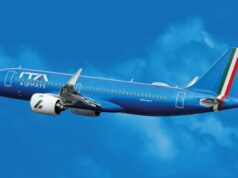 Results through August 2010 prove that international tourism continues to recover from the decline of 4.2% suffered last year under the impact of the economic crisis. In the first eight months of this year, the number of international tourist arrivals exceeded the record achieved during the same period of the pre-crisis year 2008. According to the latest issue of the UNWTO World Tourism Barometer, worldwide arrivals between January and August 2010 totalled 642 million, some 40 million more than during the same months of 2009 (+7%) and 1 million more than in the same period of the record year 2008. Based on current trends, the number of international tourist arrivals is projected to increase in the range of 5%-6% over the full year. In 2011, growth is expected to continue at a more moderate pace, at around the long-term average of 4%.
Results through August 2010 prove that international tourism continues to recover from the decline of 4.2% suffered last year under the impact of the economic crisis. In the first eight months of this year, the number of international tourist arrivals exceeded the record achieved during the same period of the pre-crisis year 2008. According to the latest issue of the UNWTO World Tourism Barometer, worldwide arrivals between January and August 2010 totalled 642 million, some 40 million more than during the same months of 2009 (+7%) and 1 million more than in the same period of the record year 2008. Based on current trends, the number of international tourist arrivals is projected to increase in the range of 5%-6% over the full year. In 2011, growth is expected to continue at a more moderate pace, at around the long-term average of 4%.
Emerging destinations continue to lead growth while Europe recovers at a slower pace
Worldwide, international tourist arrivals grew by 7% in the first eight months of 2010 compared to the same period of 2009. Results are positive in all world regions. Emerging economies however continue to lead the way, growing through August at a rate of 8% compared with 5% for advanced economies.
July and August, the traditional high-season months of the Northern Hemisphere, clearly set new records, attracting respectively 112 million and 108 million international arrivals. These 220 million represented an extra 8 million arrivals over arrivals in the peak year 2008, and 12 million more compared with the crisis year 2009. Results were strongest in March (+9%), May (+11%) and June (+9%), in contrast to the seriously negative trends during those same months a year earlier. April showed the weakest results (+2%) following the closure of European airspace due to the Icelandic volcano’s ash cloud.
Although recovery is still lagging in parts of Europe and the Americas, many destinations are already showing real growth and setting new records. Asia and the Pacific has once again shown resilience and a strong capacity for recovery. The region was caught quite early and suddenly by the economic crisis but was also the first to show signs of recovery, posting an impressive 14% growth in international arrivals through August 2010. Compared with the pre-crisis year of 2008, the region has already gained an extra 10 million international tourist arrivals. Most destinations have registered double-digit growth rates, many even above 20%.
Growth was also strong in the Middle East (+16%), although this was on a very depressed first eight months in 2009. Africa (+9%), the only region to show growth in 2009, maintained the momentum, further helped by the worldwide publicity created by the FIFA World Football Cup hosted by South Africa.
In the Americas (+8%), growth has been strong in North and Central America (+9% each). South America (+7%) is on a par with the worldwide average, while the Caribbean (+3%) is showing a lower rate of growth.
Europe (+3%) is recovering at a slower pace, due to the uneven economic recovery and the impact of the volcanic ash cloud in April. However, most destinations reported positive figures for the period May to August, in particular in Western Europe (+4%), Central and Eastern Europe (+4%) and Southern and Mediterranean Europe (+2%). Northern Europe (-3%) is the only sub-region in the world still registering negative results, pulling the average of the region down.
Stronger than expected growth confirms the resilience of the tourism sector
As on previous occasions, such as after the 9/11 attacks in 2001 and the 2003 SARS outbreak, tourism has again confirmed a strong capacity for recovery. Following a decline of 4% in international tourist arrivals in 2009, the sector is showing real growth and is expected to beat previous records by the end of 2010.
“These results reinforce the message that we have been underscoring since the outbreak of the global crisis at the end of 2008 – that tourism is one of the most dynamic economic sectors and a key driver in creating much needed growth and employment,” said UNWTO Secretary-General, Taleb Rifai, presenting these figures during the UNWTO Ministers’ Summit at the World Travel Market (London, UK). “Tourism has been seriously impacted by the global crisis, but less than other export sectors, and is currently rebounding faster and more robustly. We call upon governments worldwide, as well as multilateral forums such as the G-20, to place tourism higher on their agendas as the sector can contribute to our common objectives of sustaining recovery, regaining jobs and promoting sustainable development,” he added.
As previously stressed by UNWTO, risk factors which can negatively impact the pace of recovery remain in many advanced economies, notably budget constraints to balance public deficits in main source markets and the central issue of unemployment. Just recently, the International Labour Organization (ILO) warned that the job crisis is set to continue through 2015. The latest figures presented by UNWTO highlight tourism as one of the most promising sectors to contribute to the unemployment challenge, considering that job creation in tourism tends to outgrow that of other sectors.
“In spite of tourism’s proven contribution to the economy,” Mr. Rifai recalled “there has been an increased temptation to introduce and increase taxation on travel, particularly on air transport. These impediments seriously affect our capacity to generate jobs and stimulate economic growth, namely through export earnings that are crucial to a stable economic recovery.”
Outlook for the full year 2010 and 2011
The positive trend during 2010 is reflected in the steady rise of the UNWTO Tourism Confidence Index. A clear majority of the members of the UNWTO Panel of Experts evaluated the past eight months of 2010 as “better” or “much better”. The rating of prospects for the period September-December has also further improved, and is up for the fifth consecutive period from the deep trough a year ago.
So far the rebound in arrival numbers has turned out to be stronger than initially anticipated. The 50 countries that already have reported September data, together with the air transport data, clearly point to another sound month. For the last quarter of the year the pace of growth is expected to slow down, as it compares with an already positive last quarter of 2009. Based on the current trend, international tourist arrivals are projected to increase in the range of 5%-6% for the full year of 2010, thus exceeding 2009’s total by up to 50 million, and even improving on the record, pre-crisis 2008 count by up to 10 million. First estimates for 2011 point to an increase in international tourist arrivals worldwide in the range of 4% to 5%.
International Tourism Expenditure still lagging behind
International tourism receipts continue to lag somewhat behind arrivals in many destinations, as is generally the trend in recovery periods. The same trend is observed in tourism expenditure from the major source markets. Among the top ten markets, in terms of expenditure abroad, positive but modest increases came from traditional source markets, particularly from Germany (+1.5%), the USA (+2.5%), France (+2%), Italy (+3%) and Japan (+8%). As in recent years, emerging economies are driving the market’s growth and showing strong increases in tourism expenditure abroad, most notably China (+22%), the Russia Federation (+26%) and Brazil (+54%).











